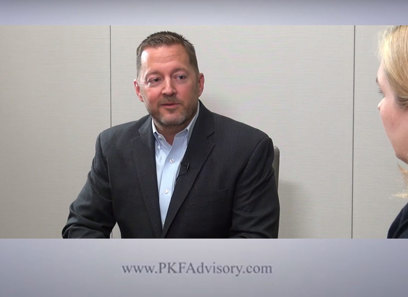The M&A Outlook: Economic Factors That Could Transform Mergers and Acquisitions
The M&A Outlook: Economic Factors That Could Transform Mergers and Acquisitions
Blog Article
The Duty of Mergers and Acquisitions fit Market Patterns and Developments
Mergers and procurements have increasingly come to be a vital device for organizations looking for to navigate the intricacies of contemporary markets. By merging resources and competence, firms can not only boost their affordable edge yet additionally militarize technology through collaborative synergies. As industries come to grips with rapid technical developments and moving customer needs, understanding the effects of M&A methods provides useful insights into future fads. The question continues to be: just how do these critical moves genuinely affect the trajectory of whole industries?
Understanding M&A Characteristics
Mergers and acquisitions (M&A) frequently offer as critical strategies for firms looking for growth, competitive advantage, or market consolidation. Comprehending the dynamics of M&A is necessary for both experts and stakeholders in navigating the complex landscape of corporate transactions. M&A processes normally involve several phases, including target identification, due persistance, settlement, and combination, each bring its very own obstacles and dangers.
The inspirations behind M&A can vary significantly; firms may seek these methods to access new markets, obtain cutting-edge innovations, or achieve functional harmonies. Additionally, adjustments in financial problems and governing atmospheres can influence M&An activity, prompting firms to adjust their methods appropriately.
Effective implementation of M&A transactions requires a detailed understanding of the cultural, economic, and operational effects included. Companies need to evaluate not only the measurable facets, such as valuation and financial efficiency, yet likewise the qualitative elements, consisting of corporate society and staff member belief. Inevitably, the ability to effectively handle these characteristics can establish the success or failure of an M&An effort, emphasizing the demand for strategic preparation and educated decision-making throughout the process.
Influence on Market Competition
The results of mergings and procurements on market competitors can be extensive, often reshaping market landscapes. When companies settle, they frequently improve their market power, allowing them to establish costs extra openly and dictate terms to suppliers and clients. This increased power can cause lowered competitors, as smaller sized players may have a hard time to compete against the incorporated resources and capacities of the joined entity.
In addition, M&A tasks can lead to market concentration, where fewer companies dominate the sector. This concentration can stifle competition, leading to higher costs and fewer choices for customers. Nonetheless, the competitive implications of acquisitions and mergings are not generally adverse. In many cases, they can create performances that benefit consumers, such as enhanced services or reduced prices through economies of range.

Innovation With Collaboration
Partnership between business can serve as a significant driver for technology, making it possible for firms to leverage each other's toughness and resources. They develop a fertile ground for the development of new concepts, products, and technologies when organizations integrate their knowledge. This harmony commonly brings about boosted analytic capabilities, allowing companies to tackle complex challenges that would be difficult to resolve separately.
Moreover, collaborative initiatives can accelerate the r & d process. By pooling their technological abilities and intellectual capital, firms can dramatically decrease time-to-market for innovative services. This is specifically obvious in sectors where quick technological innovations are vital, such as telecommunications, drugs, and infotech.
In addition, collaborations formed via acquisitions and mergers can foster a society of advancement - Mergers and Acquisitions. When workers from various backgrounds and ability collaborated, they add varied viewpoints that can influence imagination and lead to advancement technologies. This joint environment not just improves employee spirits however additionally improves retention prices, as people feel much more participated in a vibrant office
Sector-Specific Patterns
Market dynamics are significantly shaped by sector-specific fads that affect the approaches and results of mergers and acquisitions. Various sectors are experiencing one-of-a-kind pressures and possibilities, triggering companies to go after M&A as a critical tool to deal with these obstacles.
In innovation, the rapid speed of advancement and digital transformation drives companies to get start-ups to boost their abilities and expand their item offerings. Similarly, the healthcare field is seeing consolidation as organizations look for to boost functional performances and expand Get the facts their service varieties in feedback to regulatory changes and evolving individual demands.
The consumer products industry is additionally undergoing substantial modifications, with sustainability becoming an important emphasis. Mergers and procurements are being leveraged to include eco-friendly methods and items, lining up with consumer preferences and regulatory assumptions.
In finance, the increase of fintech is motivating conventional institutions to get innovative tech firms to remain affordable pop over to these guys and boost customer experiences. These sector-specific trends not only determine the nature of M&An activity however additionally highlight the necessity for business to remain active in an ever-evolving market landscape. Comprehending these patterns is essential for stakeholders to anticipate changes and take advantage of opportunities effectively.
Future Expectation of M&A
A transformative age is on the perspective for acquisitions and mergings, driven by technological innovations, regulative changes, and shifting customer habits. Companies are increasingly leveraging information analytics and artificial knowledge to recognize potential targets and enhance due diligence processes, boosting decision-making efficiency. This technological combination not just accelerates deal timelines yet also enhances the precision of evaluations.

As consumer choices continue to progress, particularly in the direction of sustainability and digital interaction, businesses try this website will certainly look for purchases that straighten with these trends. Business concentrating on electronic platforms or eco-friendly technologies are expected to come to be attractive targets, showing a more comprehensive industry commitment to adjust and grow in transforming market conditions.
Eventually, the future of M&A will certainly be identified by agility and responsiveness, as firms acknowledge the need of strategic partnerships to stay affordable. The landscape will certainly favor those that can effectively align their goals with arising fads while stabilizing regulative intricacies and technological advancements.
Verdict
By assisting in resource sharing and proficiency integration, M&A campaigns drive functional effectiveness and accelerate the growth of brand-new technologies. As industries proceed to progress in reaction to customer needs and market shifts, the critical quest of M&A will continue to be necessary in shaping future trends and cultivating sustainable development.
As markets grapple with rapid technical improvements and shifting customer demands, recognizing the ramifications of M&A strategies supplies important understandings into future fads.Mergers and purchases (M&A) frequently offer as pivotal approaches for companies looking for growth, affordable benefit, or market debt consolidation.Furthermore, M&A tasks can lead to market concentration, where less companies dominate the sector. These sector-specific trends not only determine the nature of M&An activity however likewise highlight the necessity for companies to stay nimble in an ever-evolving market landscape. As markets continue to evolve in action to customer demands and market shifts, the critical pursuit of M&A will certainly continue to be vital in forming future trends and promoting lasting development.
Report this page